Sharlyn J. Lauby's Blog, page 29
December 7, 2023
Bookmark This! Wellbeing in the Workplace Edition
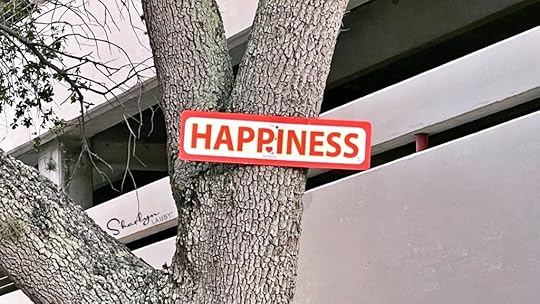
Estimated reading time: 3 minutes
Organizations continue to look for ways to entice employees to return onsite. I saw a headline in The Washington Post a couple of months ago saying “Bosses mean it this time: Return to the office or get a new job!” The article is what you would expect. While organizations would love employees to return to the office full-time, they are demanding that employees return to the office at least some of time. Right now, I think the common request is for employees to spend at least three days a week in the office.
On some level, I’m surprised that this return to onsite work conversation has lasted this long. But I also get it. Organizations don’t want employees to leave. So, they keep asking / pleading for employees to return.
Meanwhile, employees want the onsite work environment to get better with a focus on their wellbeing. According to the U.S. Census Bureau, the 2021 one-way commute to work was 27.6 minutes … an all-time high. So, if employees are going to face increasing commute times, they want to know that the work experience once they get there is going to be good. Honestly, how many people would drive for almost a half-hour only to be treated poorly for eight hours and then spend another half-hour going home? We wouldn’t do it in our personal lives, so why do it in our professional life?
However, a better work experience isn’t all about pizza parties and game tables. It’s about creating a work environment where employees feel safe and secure.
Work Is a Contributor to Wellbeing
Employees aren’t afraid of hard work. But they want to work someplace that acknowledges that work and puts programs in place to help when things get tough. Make the onsite work environment a place where employees can do the work and maintain their wellbeing. This doesn’t mean that there won’t be tough days. But if the number of tough days outnumbers the rest, then organizations need to ask themselves some hard questions.
Wellbeing Programs: Are Organizations Addressing the Cause
Organizations can promote wellness and wellbeing programs all day long, but if the company’s practices don’t support them, then employees will understand that the programs are simply for show. And the whole reason the program is being implemented (i.e., to help employees do their best work) will not materialize. Because employees will look for organizations that not only create programs but support them.
Workplace Violence Prevention Resources
Organizations need to have policies with zero tolerance for workplace violence. They need to educate employees on what to do if they are subject to or witness workplace violence. Human resources departments should be trained on how to properly investigate workplace violence concerns. And the organization needs to be prepared to act to prevent incidents and also deal with them if they happen.
Creating a Workplace First Responder Team
Hopefully, organizations create workplace first responder teams and never have to use them because they never have an incident. But I’m not sure that’s practical thinking. The time to think about emergency response is before you have an emergency.
I’m not opposed to having fun at work. That being said, organizations need to also think about the safety and wellbeing of their employees. I believe employees can have fun when they know the workplace is safe.
As organizations discuss the benefits of onsite work, don’t forget to talk about workplace safety and wellbeing. Make the onsite work experience worth the commute.
Image captured by Sharlyn Lauby while exploring the streets of Tampa, FL
The post Bookmark This! Wellbeing in the Workplace Edition appeared first on hr bartender.
December 5, 2023
Change the Conversation: UKG HR and Payroll eSymposium
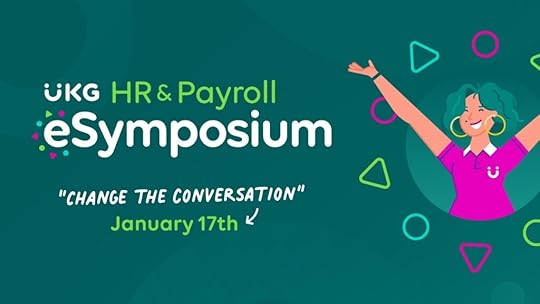
Estimated reading time: 6 minutes
(Editor’s Note: Today’s article is brought to you by our friends at UKG – Ultimate Kronos Group , a leading provider of HR, payroll, and workforce management solutions. The NelsonHall NEAT report recently named . Congrats to them and enjoy the article!)
Mark your calendars! The UKG HR & Payroll eSymposium is scheduled for Wednesday, January 17, 2024, 10a to 4p Eastern. The theme for this event is “change the conversation”.
I can definitely see how the “change the conversation” theme is relevant to today’s workplaces. I believe organizations and individuals have been looking for an opportunity to do a reset. Organizations are still trying to find that exact right mix of onsite, hybrid, and remote work. They’re also trying to balance the needs of customers, shareholders, and employees. Meanwhile, employees are trying to find their own sense of balance in terms of their personal and professional goals.
This eSymposium has several sessions designed to help individuals and organizations examine their current strategies and invent some new ones. You can check out the full agenda, speaker profiles, and register by visiting the UKG eSymposium website but, here are a few sessions that immediately caught my attention.
Hot Topics in Employment Law 2024
The pace of workplace change is rapid. Struggling with the uncertainty of recent Supreme Court decisions and the changing dynamics of union labor and strikes, employers also face a tidal wave of federal and state changes affecting the workplace. HR leaders must stay informed of the latest developments to avoid often-unseen legal issues or penalties. Employment law experts Christopher Olmsted and Brittany Brantley, from Ogletree Deakins, will share detailed insights on these breaking topics, including best practices for building alliances with your legal team.
Understanding, Identifying, and Leveraging Your Key Stakeholders
The solution to making an impact in the workplace is delivering quality and relevant work. Achieving this goal requires that you know your strengths, your areas of opportunity, and your business. Leveraging all those elements and knowing your key stakeholders not only changes the conversation, but it can also change relationships in the workplace. Coretha Rushing, former CHRO for Equifax, will discuss how to identify the most crucial stakeholders impacting your workplace goals and how to forge stronger connections with them.
More Time, More Impact: How Generative AI Gives HR Pros Superpowers
How many of us in our daily work get to do those things that drew us into our profession in the first place? If we’re honest, we often spend too much time on busywork, repetitive tasks, and other activities that don’t bring out our best abilities and passions. In this session, Ben Eubanks, chief research officer at Lighthouse Research & Advisory, will share how generative artificial intelligence can help you tackle your “to do” list and refocus your efforts and attention on creating better relationships and impact.
Strategy Activation: A Proven Gameplan
This session delivers a walk through on how you can bring organizational change to life with proven, easy to follow methodology while feeling good about the work you’re doing. Participants will be able to translate business priorities into tangible actions. UKG experts Regent Cornell, principal organizational development specialist, and Nick Jordan, lead talent development consultant, will lead the conversation on overcoming resistance to change and using strategy activation tactics with intention.
I hope you’ll agree with me that the agenda for the UKG eSymposium looks very interesting and relevant to what’s taking place right now in the workplace. Like many of you, I’m always on the lookout for FREE professional development events that really deliver on providing quality information. I’ve been participating in the UKG eSymposiums for several years and consistently find them to be a high-quality learning opportunity.
Taking Time for Our Professional Development is Important
I have to remind myself that taking time out for my own professional development is important. Now is the time to take some of our own advice. If a manager or employee came to us about not having time for learning, we’d tell them that “developing our knowledge and skills makes us better at our jobs.”. And it’s true. Here are a few reminders about the benefits of attending this event.
It’s FREE. Sometimes free things are good and sometimes … well, they’re not. The UKG HR & Payroll eSymposium is one of those good, free events. As much as we might want to travel to an event right now, the cost of travel is (still) very inflated. So, when we can identify a good, free event, we need to take full advantage.
The content is relevant and high-quality. Let me say it again. One of the things that I always enjoy about this event is that the information is relevant. I also like that the eSymposium brings together HR and payroll. I’ve been responsible for both functions a few times in my career, and this is one of the few events that has topics which are relevant to both. Since the event is free, your organization can have multiple people attend, and then maybe set up a meeting to discuss takeaways from the sessions. It’s a great way for HR and payroll to learn from each other.

You can earn recertification credits. The educational sessions have been pre-approved for recertification credits with several HR and payroll professional groups (listed below). UKG will be providing a certificate of participation for your files.
American Payroll Association (APA)Chartered Professionals in Human Resources Saskatchewan (CPHR-SK)Human Resources Certification Institute (HRCI)Human Resources Professionals Association (HRPA)National Payroll Institute (NPI)Society for Human Resource Management (SHRM)The sessions will be recorded. While this is a virtual event and being able to attend the live sessions is always beneficial, if you’re not able to, no worries. Most sessions will be made available on-demand. That way if you’re torn between two sessions then you can listen to one live and the other on demand. Honestly, I will admit I sometimes rewatch sessions again to catch some tidbits I may have missed, especially if I’m trying to use the information in a budget proposal.
The UKG HR & Payroll eSymposium is designed to deliver education on the topics we face every day and could potentially face in the future. It has the ingredients many of us look for in professional development opportunities: 1) high-quality content, 2) no cost to attend, and 3) pre-approved for recertification. We all know this doesn’t happen very often.
HR and payroll professionals are focused on a lot of things, like recruiting and retention. There are days when we say to ourselves that we can’t possibly think about taking time off to attend a professional development program. But we just have to find the best way to build in our own professional development. It’s important. Sign up for the UKG HR & Payroll eSymposium. Here are the registration details:
UKG HR & Payroll eSymposium: Change the Conversation
Wednesday, January 17, 2024
10a to 4p Eastern
The post Change the Conversation: UKG HR and Payroll eSymposium appeared first on hr bartender.
December 3, 2023
3 Employee Groups with Unique Labor Law Posting Requirements
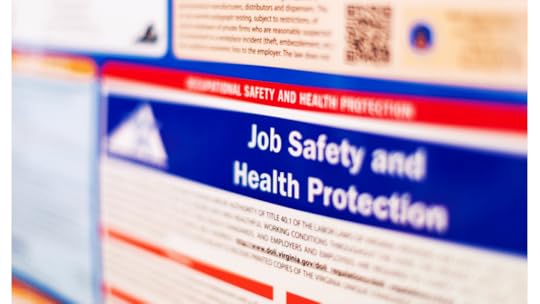
Estimated reading time: 5 minutes
(Editor’s Note: Today’s article is brought to you by our friends at Poster Guard© Poster Compliance Service from HRdirect , the leading labor law poster service that gets your business up to date with all the required federal, state, and local labor law postings, and then keeps it that way – for an entire year. Enjoy the article!)
A couple of weeks ago, I shared with you an article highlighting how different industries have different labor law posting requirements. It’s very easy to dismiss warnings about labor law posters with “Oh, we have all the right ones.” or “There will be headlines everywhere when our posters need to be updated.” That’s simply not true.
While I’m not saying that government agencies are out to catch organizations that aren’t in compliance, it’s important to realize that in today’s fast paced business world, there’s no guarantee that labor law posting updates are going to automatically move into the trending topics section of your favorite social media platform.
So today, I wanted to build on the conversation we had about the different industry requirements to talk about how labor law posters have some unique requirements for certain employee groups.
Group #1: Postings for Job Applicants. Don’t Assume Labor Law Postings are Only for Employees.
We have a tendency to think of labor law postings as being just for our employees. Truth is, four of the six mandatory federal postings apply to applicants as well. There are also state and local requirements. Physical postings must be displayed for applicants that come into your work location for interviews, pre-employment testing, or any part of the hiring process. By law, applicants must be able to view these federal postings in your business:
Equal Employment Opportunity Commission (EEOC)Employee Polygraph Protection Act (EPPA)Family and Medical Leave Act (FMLA)Uniformed Services Employment and Reemployment Rights Act (USERRA)And if your organization accepts online applications, there needs to be a way for applicants to view them there too. In an article on Yahoo Finance, 99% of Fortune 500 Companies are using applicant tracking systems (ATS), and 75% of recruiters are using an ATS to some extent. As organizations take more of their processes online, they need to be prepared to take their compliance online as well.
Group #2: Spanish Language Postings. Don’t Assume Spanish Language Postings Only Apply When You Have Spanish Speaking Employees.
As of July 1, 2021, the U.S. Census reports that the Hispanic population of the United States was 62.6 million, making people of Hispanic origin the nation’s largest ethnic or racial minority. There are thirteen states with a population of more than one million Hispanic residents: AZ, CA, CO, FL, GA, IL, NJ, NM, NY, NC, PA, TX, and WA.
Twenty-one (21) states and territories are required by law to have certain labor law postings in English and Spanish, regardless of the composition of the workforce. Additional laws apply if you have locations with a significant number of Spanish-speaking employees who are not proficient in English. Those locations must post certain federal labor law postings in both English and Spanish. Though not mandatory, it is in your best interest to display all of the state posters in English and Spanish in those locations as well.
Organizations cannot assume that, if they do not have Spanish-speaking employees, they don’t need Spanish language posters. Also, they cannot assume if they have bilingual employees that they don’t need Spanish language labor law postings.
Group #3: Postings for Remote Workers. Don’t Assume that Labor Law Postings are Only for Onsite Work Environments
In an article on Forbes, they reported that 12.7% of full-time employees work remotely and 28.2% work in a hybrid model. We all know the reasons that working remotely is popular for both organizations and employees.
On the organization size, it reduces the costs for commercial office space and decreases our carbon footprint. From the employee perspective, it reduces the cost of commuting and can offer greater work / life balance. In an article from the Society for Human Resource Management (SHRM), remote employees are more productive and save companies billions. While the SHRM article is a few years old, it does have some interesting statistics about the cost of allowing employees flexibility.

Organizations with a remote workforce need to audit their processes to ensure everyone has access to labor law postings. There are U.S. Department of Labor (USDOL) opinion letters and court cases have determined that electronic notices are a reasonable alternative for remote employees.
Close the Compliance Gap with Your Labor Law PostingsI’d like to think that organizations know they need to have labor law postings. But I can also see organizations forgetting to take the extra steps with applicants, Spanish language postings, and remote employees.
But the good news is that organizations don’t have to spend hours researching this information. Our friends at Poster Guard have a Labor Law Poster Service that will do it for you. Yes, that’s correct. Poster Guard monitors labor law requirements (at the federal, state, and local level) and lets you know when things change. They also provide you with replacement posters every time there’s a change FREE of charge! And, they provide a 100% guarantee that the posters are in compliance or they’ll pay the fine.
Oh, and one more thing about the service. It includes foreign language postings, if required for all employers, regardless of the languages spoken in the workplace.
Honestly, this is a no brainer for me. As a HR professional, I have so many other things I need to spend my time on than researching labor law posting requirements. Personally, I would much rather have a professional service do what they do best, which frees up my time to recruit, engage, and retain the best employees.
The post 3 Employee Groups with Unique Labor Law Posting Requirements appeared first on hr bartender.
November 30, 2023
Use Data and Analytics to Make the Organization More Connected

Estimated reading time: 5 minutes
I know that some people hate math. But I hope even if you’re not into math that you’ll stick with me on today’s article.
I’ve been listening to some MasterClass sessions and stumbled onto one by Dr. Terence Tao, who has been nicknamed “The Mozart of Mathematics”. He is a professor of mathematics at the University of California, Los Angeles and has received numerous awards for his contributions to the field. I must admit, I had never heard of Dr. Tao, but I like math, so I decided to listen to his class … and I’m very glad I did.
Dr. Tao talked about how math makes things more connected. I thought this was a great business takeaway. In business, we often talk about math in the context of data and analytics. It’s possible that some people might say organizations talk about the numbers too much. Maybe instead of thinking about data and analytics as being cold and objective, it’s time to think of them as a way to connect the organization. And view them as a language to help us make those connections and communicate better.
Keeping that in mind, Dr. Tao’s MasterClass was focused on how we can use math and problem solving to better make connections for ourselves and around the organization. I believe we can apply these takeaways to the way we use data and analytics.
Getting stuck is normal. It’s okay to not know everything. Dr. Tao discussed how being a mathematician was challenging because everyone always expected him to have the answer and sometimes, he didn’t. It’s possible that we need to do more research to get insights which will help us get unstuck. Sometimes we just need to let problems go until they’re ready to be solved. There was one other thing he mentioned when talking about getting stuck and not knowing answers that really resonated with me. He said that if you never get stuck maybe you need to ask yourself if you’re challenging yourself enough.
Have a mentor. Be a mentor. This also came up in RuPaul’s MasterClass. Mentoring is a valuable activity for our personal and professional lives. Mentors could be useful in helping us frame problems and solutions. They could be helpful in reminding us that getting stuck is normal and it’s okay not to know everything (see above).
Learn how to identify problems. Dr. Tao talked about how organizations often set themselves up for frustration and possibly failure because they don’t correctly identify the problem. Three things to note: 1) If you have a big problem, it might be necessary to break it down into smaller more manageable parts. 2) Have a good problem-solving process and make sure people know how to use it. And 3) Become comfortable with being a part of a bigger process. We might need help from others to solve a problem.
Disrupt your thought process to change your thinking. This ties into the first bullet about getting stuck. Sometimes we might get stuck because we feel that we must solve a problem a certain way, meaning that we feel we have to arrive at a specific outcome. It could make sense to do a “reset”, whether that’s individually or as a team. I’m not saying abandon your process but is there a way to look at the data differently to gain better insights.
Show your “outtakes”. Do you ever watch the bloopers from your favorite TV show or movie? I’m reminded of a scene in the Apple TV show Ted Lasso where the team loses badly. Of course, part of the coaching process is to review the game so the team can learn from the loss. But Ted shows the game on fast forward to the theme music from the “Benny Hill” show. It allows the team a light moment before discussing the seriousness of the loss. Often our flubs or first attempts can be very helpful and a learning moment. But we do have to get comfortable with facing mistakes.
Failure is okay. Speaking of mistakes, it’s possible you will not achieve your original goal but that’s okay because you learned something along the way. Learning from that mistake could help you eventually solve the problem. Or possibly help the organization reframe the problem. Or even help us reset our thinking. The point being that we’re not perfect and we are going to make mistakes.
One of the reasons that I liked Dr. Tao’s MasterClass is because of his authenticity and honesty in talking about data and analytics. He is a very smart and accomplished professional. Many of us are too. But that doesn’t mean there aren’t moments where we might feel pressure to have all the answers or be afraid to admit our mistakes.
From an organizational standpoint, I sometimes see this in managers. Once a person is promoted to manager, they feel they need to know everything. That employees won’t respect them if they say that they don’t know something. Or they’re concerned about telling their boss that they made a mistake. Yes, we need to have well-defined processes and follow-them. But instead of punishing people for not being perfect, let’s help them turn the moment into a way to strengthen organizational connections.
The post Use Data and Analytics to Make the Organization More Connected appeared first on hr bartender.
November 28, 2023
The Employee Experience Drives Employee Retention – hr bartender
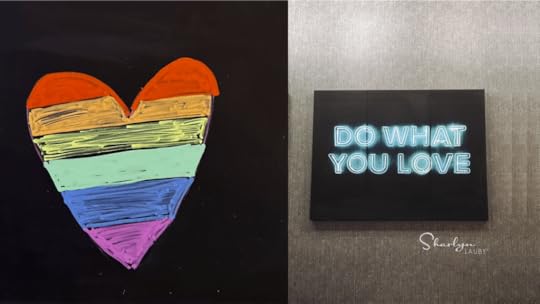
Estimated reading time: 3 minutes
I read an article in HR Brew about how new hires are leaving organizations at higher rates than in previous years. According to a report from Qualtrics, 40% of employees who have been with an organization for less than six months are planning to leave. The report cites the reason being a disconnect in setting new hires up for success (i.e., onboarding).
There are lots of articles declaring that quiet quitting is over and voluntary quits are down. And that might be true. But it doesn’t change the fact that turnover is expensive. Organizations should remember that there’s a direct relationship between the employee experience and retention.
If you’re looking for an opportunity to assess your employee experience, here are a few articles that might be useful.
A 5-Step Audit of the Candidate Experience
Some people might be saying, “I thought we were talking about the employee experience?”. Truth is that the labor market continues to be competitive. Organizations cannot have a terrible candidate experience and expect people to want to work for them. A positive candidate experience is the gateway to a positive employee experience.
Give Employees a Better Employee Experience
Organizations are very focused on the economy and profits right now. Hopefully, they are equally focused on the people side of the business. Because it takes people to earn profits. Companies that want to thrive will make the connection and deliver the best experience.
Employees Expect an Experience Based on Trust
The employee experience is important. Candidates want to talk about it during the interview. Employees want to learn about it during onboarding. And all along the way, employees want to know that they can trust their employer to do the right thing – be honest. That helps with employee retention. Even when we don’t have all the answers. Or when we have an answer that the employee might not want to hear.
I do believe there might have been a time when candidates and employees wanted to work at companies where the employment brand portrayed “family”. I’m not sure that’s the case today. But that doesn’t mean organizations have to change who they are. My guess is if they really looked at their definition of family, the company already has a great message to send.
Employee Feedback Can Help Employers Save Money
Organizations are always going to have some sort of challenge that they’re dealing with. Start putting a process in place to ask and get employee feedback. That can help with employee retention. Employees have great ideas. Use them.
Organizations Need to Proactively Monitor the Employee Experience
I want to believe we all agree that organizations need to have a pulse on what’s happening in the workplace. The process of doing so is a never-ending task. Because expectations change all the time – company expectations, customer expectations, and employee expectations.
That’s why using a gap analysis to set a baseline then regularly utilizing the feedback tools allows the organization to proactively monitor the employee experience.
Organizations spend a lot of time and resources attracting and selecting the best talent. From a business perspective, it doesn’t make a lot of sense to not give those employees a great experience and setting them up for success. And we’re not just talking about new hires. Throughout an employee’s career, they should feel the organization wants them to have a good experience and wants them to be successful.
Image captured by Sharlyn Lauby while exploring the streets of Orlando, FL
The post The Employee Experience Drives Employee Retention – hr bartender appeared first on hr bartender.
November 19, 2023
Different Industries Require Different Labor Law Postings
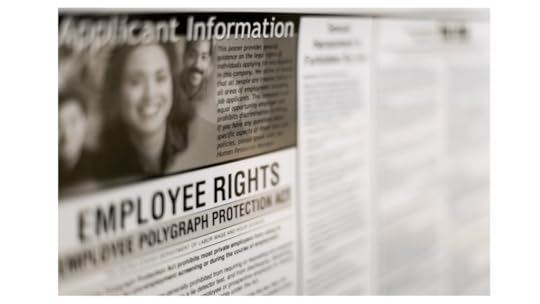
Estimated reading time: 6 minutes
(Editor’s Note: Today’s article is brought to you by our friends at Poster Guard® Compliance Protection , a division of HRdirect and the leading labor law poster service that gets your business up to date with all required federal, state and local labor law postings, and then keeps it that way — for an entire year. Enjoy the article!)
A few months ago, I published an article about three new labor law poster changes that have been implemented lately. Quick FYI – the three changes are the Pregnant Workers Fairness Act (PWFA), the Providing Urgent Maternal Protections for Nursing Mothers (PUMP) Act, and the EEOC Know Your Rights. I hope you’ll check it out when you have a moment.
Today, I’d like to offer a friendly reminder that when we’re thinking about labor law postings, not every organization is the same. Some industries have specific labor law posting requirements that companies need to know. Here are three examples of industry specific labor law postings that organizations need to remember.
If the organization has government contracts, don’t forget your federal contractor postings.
According to the U.S. Treasury department, the United States government spent $6.13 trillion (and that’s not a typo) this year. While a big piece of government spending goes towards programs like Social Security and Medicaid, billions of dollars end up with private sector companies. And as you would expect, a big chunk of those billions go to defense contractors.
However, according to the Small Business Administration (SBA), 23% of government contracts are targeted for small businesses. Meaning we can’t make the assumption that only big businesses are federal contractors. Many different types of organizations have contracts with the government: financial institutions, technology companies, non-profits, auto dealers, retailers, service establishments, etc. If your organization is a federal contractor, there are posting requirements. Here’s a sampling of the ten common federal contractor posters:
Department of Defense (DOD) Hotline Department of Homeland Security (DHS) HotlineE-VerifyMinimum WageNational Labor Relations Act (NLRA)Notice to Workers with DisabilitiesPaid Sick LeavePay Transparency StatementRight to WorkWalsh-Healy Public/Service ContractsThis goes without saying, but I’ll say it anyway, the penalty for non-compliance isn’t just a fine. It could include losing a government contract. I’d like to think that, if your organization has a nice contract with the government, it makes good business sense to maintain compliance and keep it that way.
Different industries have different posting requirements. All organizations are not the same.
Currently, there are six federal labor law posters that most organizations are required to post.
Employee Polygraph Protection Act (EPPA)Equal Employment Opportunity Commission (EEOC)Fair Labor Standards Act (FLSA)Family and Medical Leave Act (FMLA) Occupational Safety and Health Administration (OSHA)Uniformed Services Employment and Reemployment Rights Act (USERRA)Certain types of organizations have additional posting requirements. For example, organizations in the hospitality industry might have requirements to post information about alcohol service, CPR and choking assistance information, and notices for tipped employees.
In addition, health care organizations might have up to 18 additional notices covering areas such as biohazard materials, radiation areas, and Health Insurance Portability and Accountability Act (HIPAA) Notice of Privacy Practices.
And, public-sector employee notices include whistleblower protections, right to know postings, and information about electronic monitoring. Government agencies also have their own unique versions of the OSHA and FLSA. The takeaway here is that even when it comes to federal posting requirements, we cannot assume that all organizations are the same.

Organizations that have their federal and state postings, but not their industry specific ones, are still at risk.
It might be tempting to think that the organization doesn’t need to spend a lot of time worrying about the “labor law poster police” because the company can simply pay the fine and move on. Someone might say, “So, what’s the big deal if the company doesn’t have their industry postings?” Let’s remember that the purpose of labor law postings is to inform employees of their legal rights (and responsibilities) under federal, state, and local law.
Sadly, I’ve actually heard senior leaders suggest not putting up posters because they were “ugly”. Thankfully, the organization came to their senses and realized they needed to focus on the purpose of the posting and their responsibilities as an employer.
The reason I wanted to mention the ugly poster comment is because I’m not naive. I realize that organizations might have plenty of money to pay a fine. The question becomes do organizations want to pay two fines? Six fines? Ten fines? I spoke with Ashley Kaplan, Esquire, senior corporate counsel for HRdirect, and she told me that the fines for a federal notice violation could be as much as $41,000+ per location. So, let’s say that you’re an auto dealer with 4 locations that services government vehicles. That puts your risk potential at $160,000. Not to mention increased legal exposure in employment litigation and negative public relations if job candidates and employees found out about the incident.
Stay in Labor Law Posting Compliance
What amazes me about these industry-specific labor law posting requirements isn’t that labor law compliance is complex. Staying current with legislation is complex in general. The amazing part to me is that organizations don’t look for ways to make the process easier.
Our friends at Poster Guard have a Labor Law Poster Service that will do it for you. Yep, that’s right. Poster Guard monitors labor law requirements (at the federal, state, and local level) and lets you know when things change. In addition, they have an add-on service that covers industries like healthcare, hospitality, and the public sector.
Poster Guard extends a 100% guarantee that all posters are compliant – or they’ll pay any government fine due to improper posting content. But to me, the best part of the service is that for an entire 12 months, you get new posters every time a mandatory change occurs … automatically and at no additional cost.
One of the biggest business lessons I’ve learned over the years is just because I could do something doesn’t mean I should. Spending huge amounts of time on manual tasks keeps me from other activities like recruiting, engagement, learning, and retention. The same applies to other organizations. Spending lots of time manually tracking labor laws keeps the organization from their customers. That has a direct impact on the bottom-line.
The post Different Industries Require Different Labor Law Postings appeared first on hr bartender.
November 16, 2023
Bookmark This! The Commonplace Book Edition Schedule Time to Think About Your Career –� hr bartender
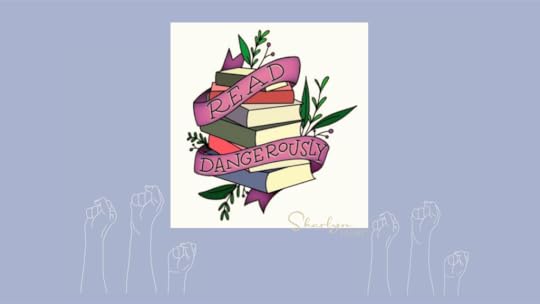
According to a 2020 survey published on Psychology Today, about 1 in 6 people are active journalers. Journaling can have a positive impact on our overall wellbeing. I’ve written in the past about how journaling can be helpful in your career development.
I’ve journaled a handful of times in my life: when I was recovering from my car accident, my first year as a consultant, and most recently during the pandemic. I found the practice very useful. But then I saw an article on Austin Kleon’s blog titled “The Importance of Revisiting Notebooks” and it made me wonder. Because I never went back and revisited those journals.
I don’t want to imply that anyone might be doing journaling wrong if they don’t go back and revisit their old journals. The article did make me wonder though if I wasn’t getting the full benefit. This started a project for me about how to make the most out of journaling. Which is how I discovered commonplace books.
A commonplace book is a way to compile knowledge. They date back to the 19th Century. People like Leonardo da Vinci, Henry David Thoreau, and Virginia Woolf have been known to keep commonplace books.
This article in The New York Times Magazine did a great job of summing up a commonplace book. They’re like a diary without the risk of annoying yourself. Commonplace books are a place to keep quotes, lines from books and songs, or pictures that just speak to you. Austin Kleon, who started me down this rabbit hole in the first place, had a nice read titled “Inside my commonplace diary”.
The best way for me to describe the difference between journals and commonplace books is that journals contain our thoughts and commonplace books contain external stimuli. That’s when it hit me. Maybe what my journaling practice was missing was the outside world. So, in an act of rebellion, I decided to merge my journaling with a commonplace book. Here are two things I learned.
It’s very easy (and relatively inexpensive) to start. I didn’t buy a fancy journal or book to start this project. You know all those free notebooks we get at conferences? I grabbed one of those. I figured if I really get into it, then I can decide later if I want something more.
When I want to journal, I do. And when I want to remember something that I’ve seen or heard, I make note of that too. Sometimes they are related. I might see a quote that I want to remember and make a note of why I want to remember it.
I’ve been using this combination journal / commonplace book approach for a few months, and I must say I’m enjoying it. I also find myself occasionally revisiting what I’ve written … which is what prompted this project in the first place.
If you’re looking for a way to add something new to your journaling practice, I hope you find this helpful. And if you were trying to figure out if journaling is for you … maybe researching commonplace books makes sense. There are no rules. Ultimately, it’s about finding the right combination of things for you. Because when it works for you … then it works. And that’s what is important.
Image from Sharlyn Lauby’s latest graphic t-shirt from TeePublic
The post Bookmark This! The Commonplace Book Edition – hr bartender appeared first on hr bartender.
Bookmark This! The Commonplace Book Edition – hr bartender

According to a 2020 survey published on Psychology Today, about 1 in 6 people are active journalers. Journaling can have a positive impact on our overall wellbeing. I’ve written in the past about how journaling can be helpful in your career development.
I’ve journaled a handful of times in my life: when I was recovering from my car accident, my first year as a consultant, and most recently during the pandemic. I found the practice very useful. But then I saw an article on Austin Kleon’s blog titled “The Importance of Revisiting Notebooks” and it made me wonder. Because I never went back and revisited those journals.
I don’t want to imply that anyone might be doing journaling wrong if they don’t go back and revisit their old journals. The article did make me wonder though if I wasn’t getting the full benefit. This started a project for me about how to make the most out of journaling. Which is how I discovered commonplace books.
A commonplace book is a way to compile knowledge. They date back to the 19th Century. People like Leonardo da Vinci, Henry David Thoreau, and Virginia Woolf have been known to keep commonplace books.
This article in The New York Times Magazine did a great job of summing up a commonplace book. They’re like a diary without the risk of annoying yourself. Commonplace books are a place to keep quotes, lines from books and songs, or pictures that just speak to you. Austin Kleon, who started me down this rabbit hole in the first place, had a nice read titled “Inside my commonplace diary”.
The best way for me to describe the difference between journals and commonplace books is that journals contain our thoughts and commonplace books contain external stimuli. That’s when it hit me. Maybe what my journaling practice was missing was the outside world. So, in an act of rebellion, I decided to merge my journaling with a commonplace book. Here are two things I learned.
It’s very easy (and relatively inexpensive) to start. I didn’t buy a fancy journal or book to start this project. You know all those free notebooks we get at conferences? I grabbed one of those. I figured if I really get into it, then I can decide later if I want something more.
When I want to journal, I do. And when I want to remember something that I’ve seen or heard, I make note of that too. Sometimes they are related. I might see a quote that I want to remember and make a note of why I want to remember it.
I’ve been using this combination journal / commonplace book approach for a few months, and I must say I’m enjoying it. I also find myself occasionally revisiting what I’ve written … which is what prompted this project in the first place.
If you’re looking for a way to add something new to your journaling practice, I hope you find this helpful. And if you were trying to figure out if journaling is for you … maybe researching commonplace books makes sense. There are no rules. Ultimately, it’s about finding the right combination of things for you. Because when it works for you … then it works. And that’s what is important.
Image from Sharlyn Lauby’s latest graphic t-shirt from TeePublic
The post Bookmark This! The Commonplace Book Edition – hr bartender appeared first on hr bartender.
November 14, 2023
Bookmark This! The Commonplace Book Edition Schedule Time to Think About Your Career –� hr bartender�������������Bookmark This! The Commonplace Book Edition – hr bartender
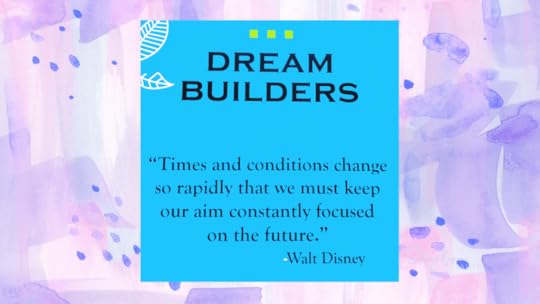
Estimated reading time: 4 minutes
One of the activities we don’t spend enough time proactively thinking about is our careers. We get busy and career planning kinda moves down on the priority list. Then when things aren’t going great, we find ourselves reacting to the environment around us. Which isn’t great when it comes to making career decisions.
So, I’m hoping today’s roundup of articles is a good reminder to schedule some time for yourself to think about your career and what you hope to accomplish in the months to come.
Career Planning: The Employee’s Role in Driving Their Success
While organizations are very involved in the process of career planning, that doesn’t mean they can drive all of the outcomes. Employees need to understand themselves and decide what they want their career to look like – both short- and long-term. It’s also the employee’s responsibility to communicate those goals to management. Ultimately, that’s how managers can support the employee and their future plans.
One of the qualities that employers want in an employee is curiosity. It’s defined as a “strong desire to know or learn something”. Curiosity can be incredibly helpful to employees and organizations. Especially when organizations want a lean operation. Think about how you can find your own answers – successfully.
Improve Your Business Acumen with These 10 Activities
I’ve come to realize that business acumen isn’t something you learn once and you’re done. Business acumen is changing all the time. Yes, it’s true that terms like profit and EBDITA haven’t changed. But now we have new terms like mattering, toggling tax, and productivity paranoia. If you want to be a contributor and effective business partner, then you must know how to continuously gain exposure to new business concepts and ideas.
You Must Define Your Own Work Life Balance
Work life balance is important, and it contributes to a person’s wellbeing. Unfortunately, I’ve seen people be less than honest with themselves about their work life balance and end up being stressed out and burned out.
Sometimes part of our career planning includes making a change. If you’re thinking that it’s time to start a career transition – whether that’s an internal move or an external one – here are a few articles that might help.
Quitting Is Not a Sign of Failure
There are lots of inspirational quotes and sayings that want us to believe that quitting is bad or wrong or a sign of failure. It’s not. Sometimes quitting is the absolutely right thing to do. Ideally, it’s good to quit with a plan, so we can learn from the experience. That’s why quitting isn’t a sign of failure. Because we learned something along the way.
Make Creating Change a Part of Your Professional Life
Anyone can be a change maker. Influencing change isn’t an “old person” thing or a “young person” thing. Give what you can when you can. That’s how change happens. That’s how we can make an impact in both our personal and professional lives.
If you’re looking for a new way to learn and contribute, volunteerism is a valuable experience both personally and professionally. But finding the right volunteer opportunity can take some time. That initial investment in research can offer huge benefits and lifetime rewards.

Keep Your LinkedIn Profile Current
Regardless of your opinions about social media, it’s still a part of our personal and professional lives. And when it comes to business, LinkedIn is still tops. That means managing your profile matters. There are lots of resources to help us create and maintain a positive social media presence.
How to Create a Quitting Plan (and Yes, You Should)
If we think about it, quitting is simply a form of change. And change is okay. We can use our skills in problem solving, decision making, change management, and goal setting to help us successfully quit and restart. This doesn’t mean quitting isn’t hard. All change is hard. Even the changes we plan for. But creating a plan can help us think about the steps we need to take and when we’d like to take them. Sometimes having that kind of control can make quitting and changing a lot easier.
We spend a huge amount of time working which is why we owe it to ourselves to give our professional lives the time and energy it deserves. Schedule some time to think about your career and what you want to accomplish. List your goals and be able to articulate them. I’m not saying that everything will happen exactly the way we want it to, but taking the time to have a career plan keeps us focused on the things that matter.
Image captured by Sharlyn Lauby while exploring Walt Disney World, FL
The post Schedule Time to Think About Your Career – hr bartender appeared first on hr bartender.
Schedule Time to Think About Your Career – hr bartender

Estimated reading time: 4 minutes
One of the activities we don’t spend enough time proactively thinking about is our careers. We get busy and career planning kinda moves down on the priority list. Then when things aren’t going great, we find ourselves reacting to the environment around us. Which isn’t great when it comes to making career decisions.
So, I’m hoping today’s roundup of articles is a good reminder to schedule some time for yourself to think about your career and what you hope to accomplish in the months to come.
Career Planning: The Employee’s Role in Driving Their Success
While organizations are very involved in the process of career planning, that doesn’t mean they can drive all of the outcomes. Employees need to understand themselves and decide what they want their career to look like – both short- and long-term. It’s also the employee’s responsibility to communicate those goals to management. Ultimately, that’s how managers can support the employee and their future plans.
One of the qualities that employers want in an employee is curiosity. It’s defined as a “strong desire to know or learn something”. Curiosity can be incredibly helpful to employees and organizations. Especially when organizations want a lean operation. Think about how you can find your own answers – successfully.
Improve Your Business Acumen with These 10 Activities
I’ve come to realize that business acumen isn’t something you learn once and you’re done. Business acumen is changing all the time. Yes, it’s true that terms like profit and EBDITA haven’t changed. But now we have new terms like mattering, toggling tax, and productivity paranoia. If you want to be a contributor and effective business partner, then you must know how to continuously gain exposure to new business concepts and ideas.
You Must Define Your Own Work Life Balance
Work life balance is important, and it contributes to a person’s wellbeing. Unfortunately, I’ve seen people be less than honest with themselves about their work life balance and end up being stressed out and burned out.
Sometimes part of our career planning includes making a change. If you’re thinking that it’s time to start a career transition – whether that’s an internal move or an external one – here are a few articles that might help.
Quitting Is Not a Sign of Failure
There are lots of inspirational quotes and sayings that want us to believe that quitting is bad or wrong or a sign of failure. It’s not. Sometimes quitting is the absolutely right thing to do. Ideally, it’s good to quit with a plan, so we can learn from the experience. That’s why quitting isn’t a sign of failure. Because we learned something along the way.
Make Creating Change a Part of Your Professional Life
Anyone can be a change maker. Influencing change isn’t an “old person” thing or a “young person” thing. Give what you can when you can. That’s how change happens. That’s how we can make an impact in both our personal and professional lives.
If you’re looking for a new way to learn and contribute, volunteerism is a valuable experience both personally and professionally. But finding the right volunteer opportunity can take some time. That initial investment in research can offer huge benefits and lifetime rewards.

Keep Your LinkedIn Profile Current
Regardless of your opinions about social media, it’s still a part of our personal and professional lives. And when it comes to business, LinkedIn is still tops. That means managing your profile matters. There are lots of resources to help us create and maintain a positive social media presence.
How to Create a Quitting Plan (and Yes, You Should)
If we think about it, quitting is simply a form of change. And change is okay. We can use our skills in problem solving, decision making, change management, and goal setting to help us successfully quit and restart. This doesn’t mean quitting isn’t hard. All change is hard. Even the changes we plan for. But creating a plan can help us think about the steps we need to take and when we’d like to take them. Sometimes having that kind of control can make quitting and changing a lot easier.
We spend a huge amount of time working which is why we owe it to ourselves to give our professional lives the time and energy it deserves. Schedule some time to think about your career and what you want to accomplish. List your goals and be able to articulate them. I’m not saying that everything will happen exactly the way we want it to, but taking the time to have a career plan keeps us focused on the things that matter.
Image captured by Sharlyn Lauby while exploring Walt Disney World, FL
The post Schedule Time to Think About Your Career – hr bartender appeared first on hr bartender.
Sharlyn J. Lauby's Blog
- Sharlyn J. Lauby's profile
- 10 followers



